Graphic
Ahnes Shim Hanok that Breathes (숨쉬는 한옥)
-
Tauira / Student
Ahnes Shim -
Kaiako / Lecturers
Fiona Grieve, Marcos Mortensen Steagall
-
School
AUT Art + Design 2025


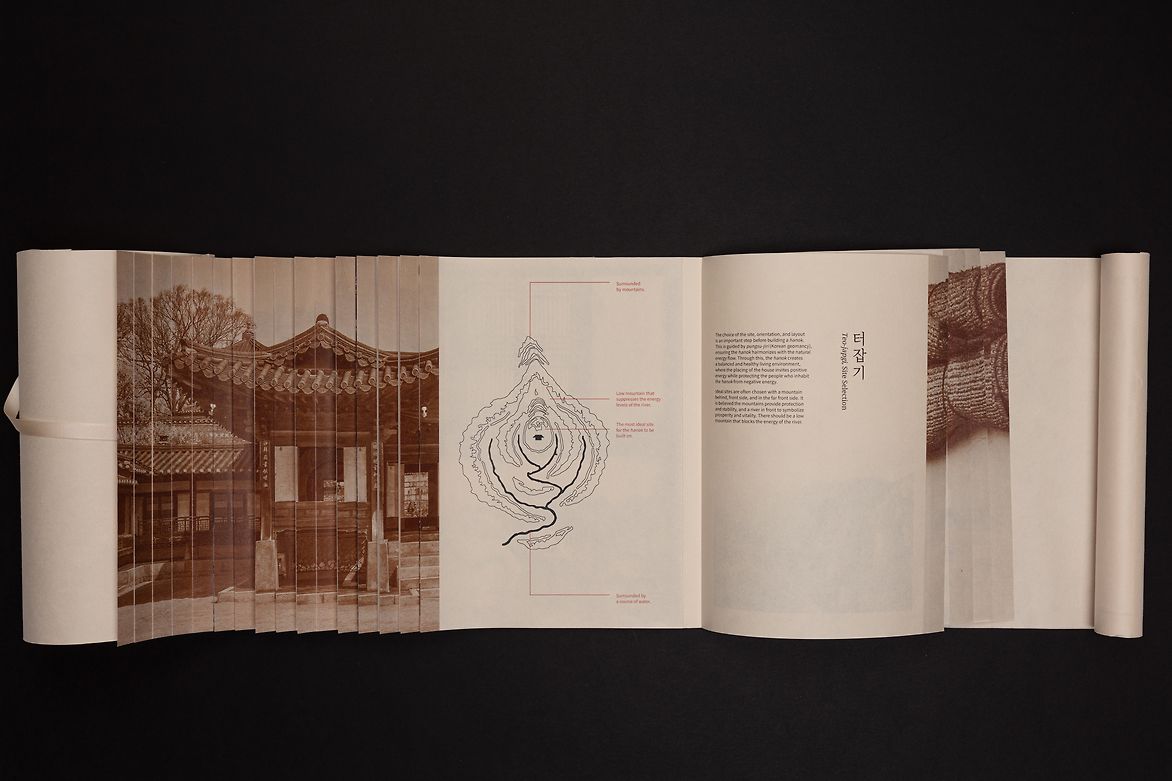


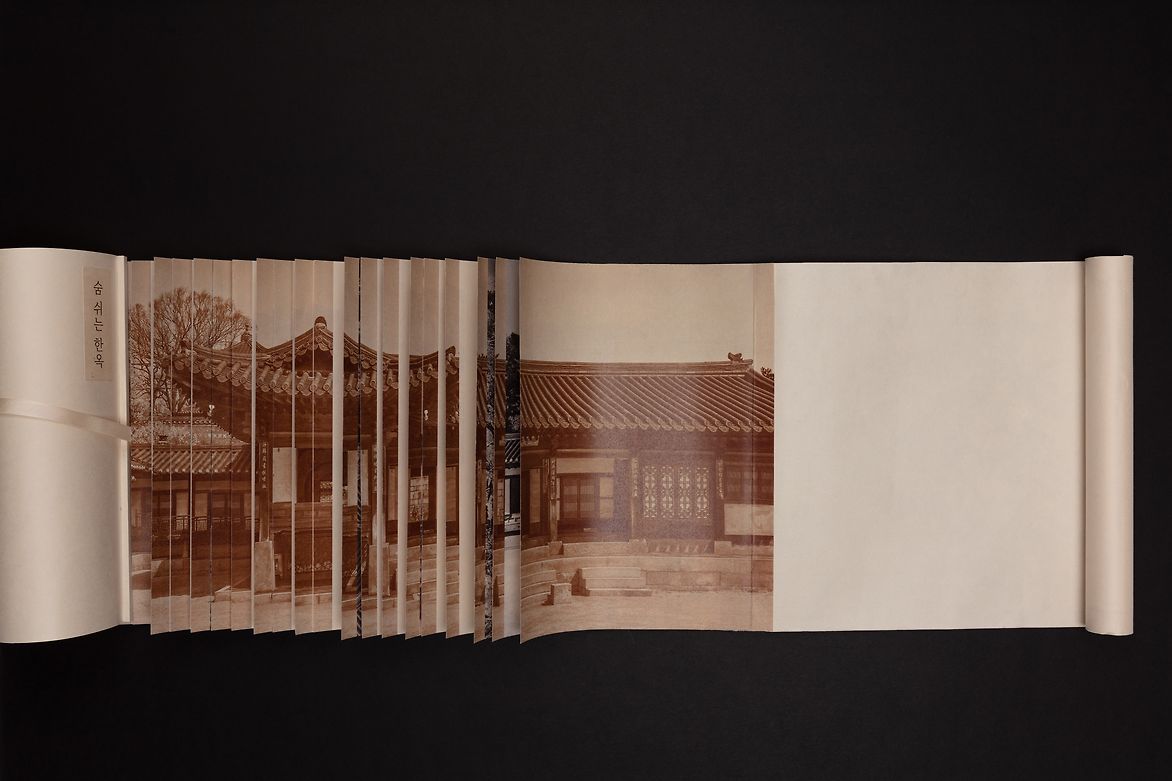
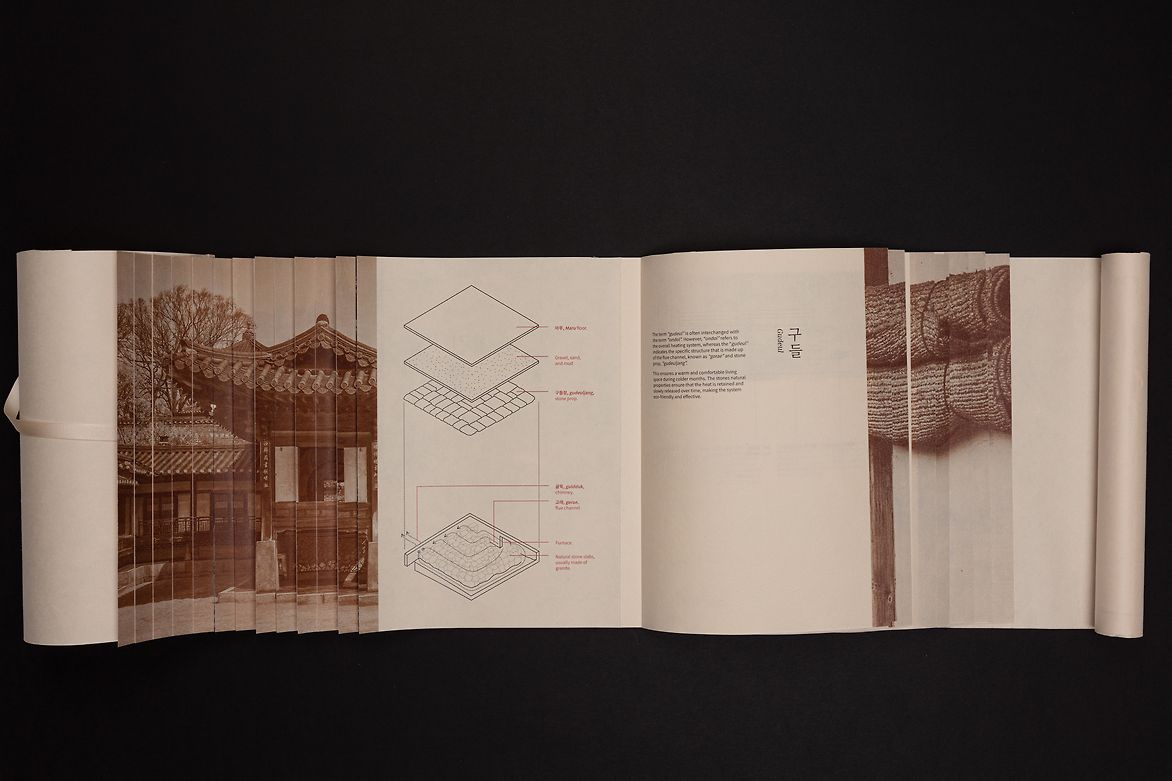
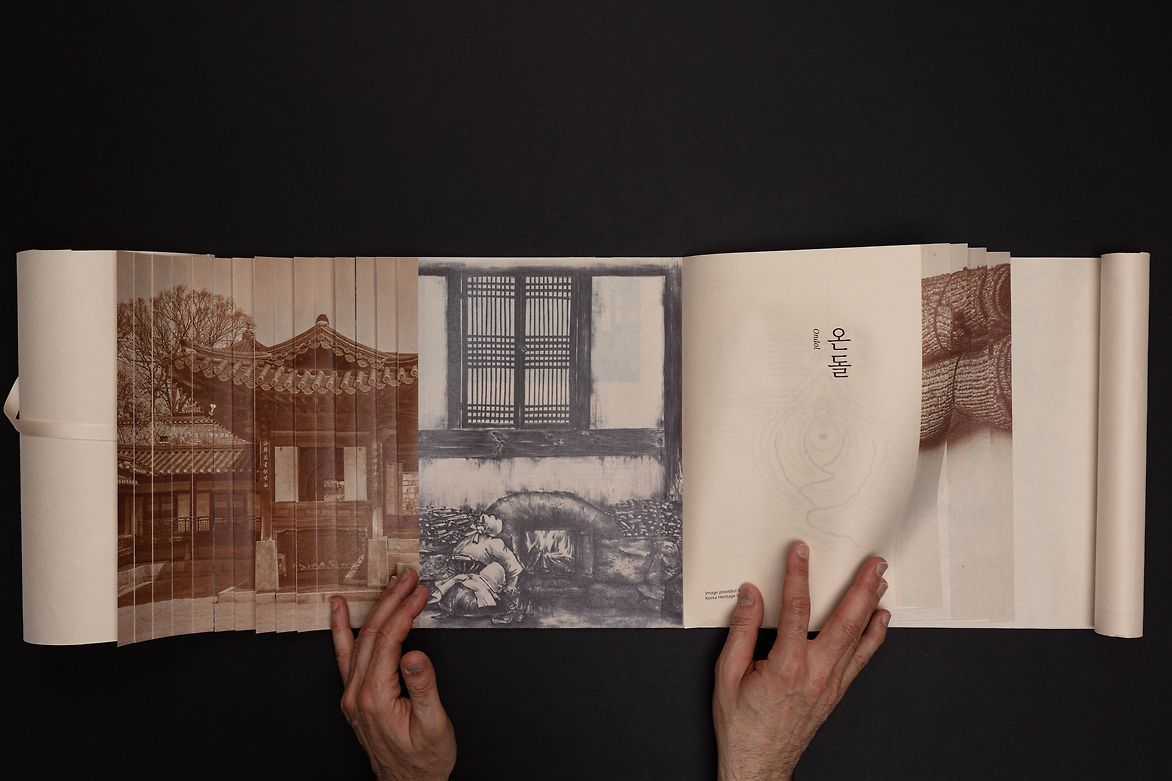

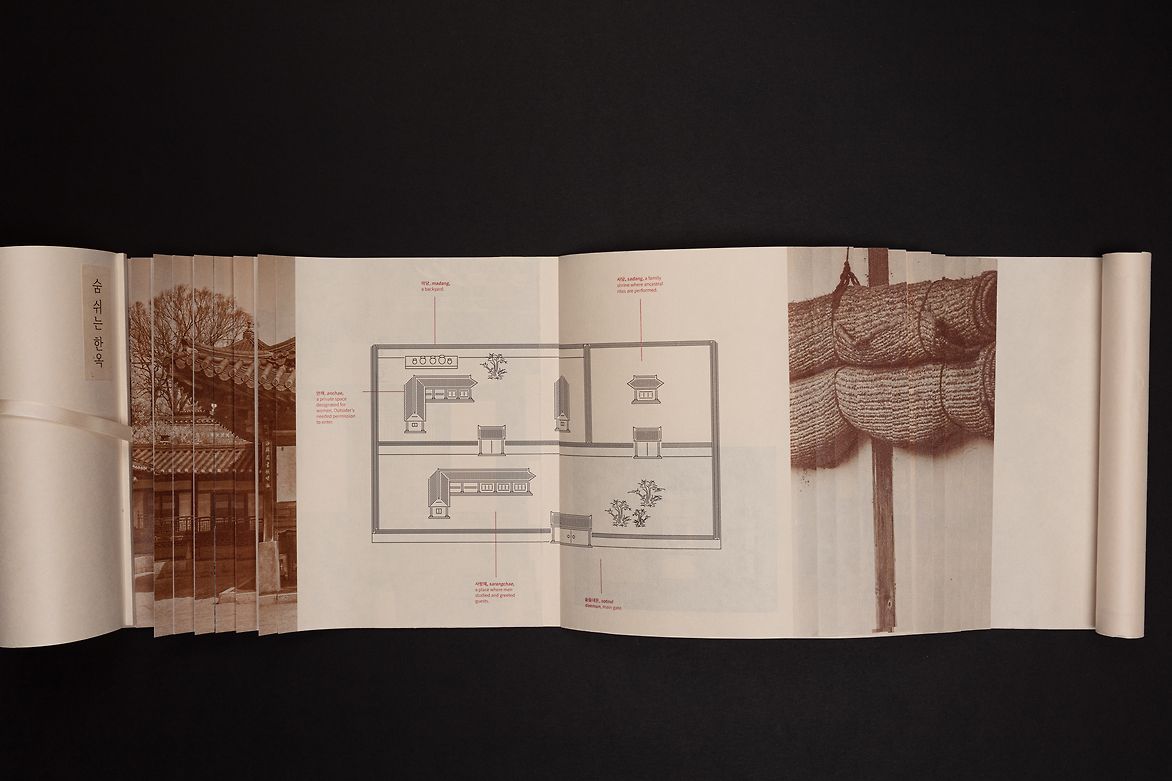
Description:
Hanok that Breathes (숨쉬는 한옥) is a practice-led design research project that explores traditional Korean architecture as a vessel for cultural storytelling. Using the traditional Korean binding method seonpoongyeop, the work reimagines the hanok—traditional Korean housing—not merely as a physical structure, but as a cultural text that encodes morals, beliefs, and intergenerational knowledge. The project is informed by the personal experience of growing up Korean in Aotearoa New Zealand and responds to the complex feelings of cultural disconnection often experienced by diasporic communities. In particular, it seeks to offer second-generation Koreans a way to reconnect with their heritage through a lens that combines cultural, spatial, and ethical dimensions. Rooted in both architectural analysis and material experimentation, Hanok that Breathes draws on five key architectural elements of the hanok, each explored through eight sub-categories. These elements serve as entry points into understanding how Confucian ethics, social hierarchies, and collective values are encoded within built form. By identifying these embedded cultural principles, the project demonstrates how architecture can express and preserve the moral frameworks of a society. The book is printed on handmade hanji paper, traditionally used for changho (paper-covered windows) in hanok. The concertina format enables a dual reading experience: the front side presents the exterior architectural motifs of a hanok, while the reverse unfolds into internal spaces, inviting the viewer to metaphorically and physically enter the home. This form supports contemplative engagement, allowing readers to move slowly and reflectively through the narrative. Unlike conventional scroll formats such as durumari, which may be difficult to navigate in contemporary settings, the choice of an accessible structure encourages broader audience engagement while remaining anchored in Korean design traditions. The physical format of the book reflects the central concept: that cultural heritage must be both preserved and made legible for present and future generations. In this way, Hanok that Breathes positions architecture not only as built environment but as a living expression of cultural identity. The work demonstrates how traditional forms can be revisited and reinterpreted to support the cultural wellbeing of diasporic communities. It further contributes to cross-cultural dialogue by encouraging viewers to consider the role of built space in shaping ethical and social relationships. By combining graphic design, traditional binding techniques, and architectural research, the project proposes a method for translating intangible heritage into contemporary visual communication. Through this, Hanok that Breathes contributes to a growing conversation in design practice about the ethical and cultural responsibilities of designers working across cultural contexts. The project ultimately affirms that architecture, when understood as a living archive, can offer meaningful pathways for identity, belonging, and cultural continuity.
Judge's comments:
An innovative design format that recalls ancient traditions. An inspiring look into the world of Korean architecture, and a Korean world view.